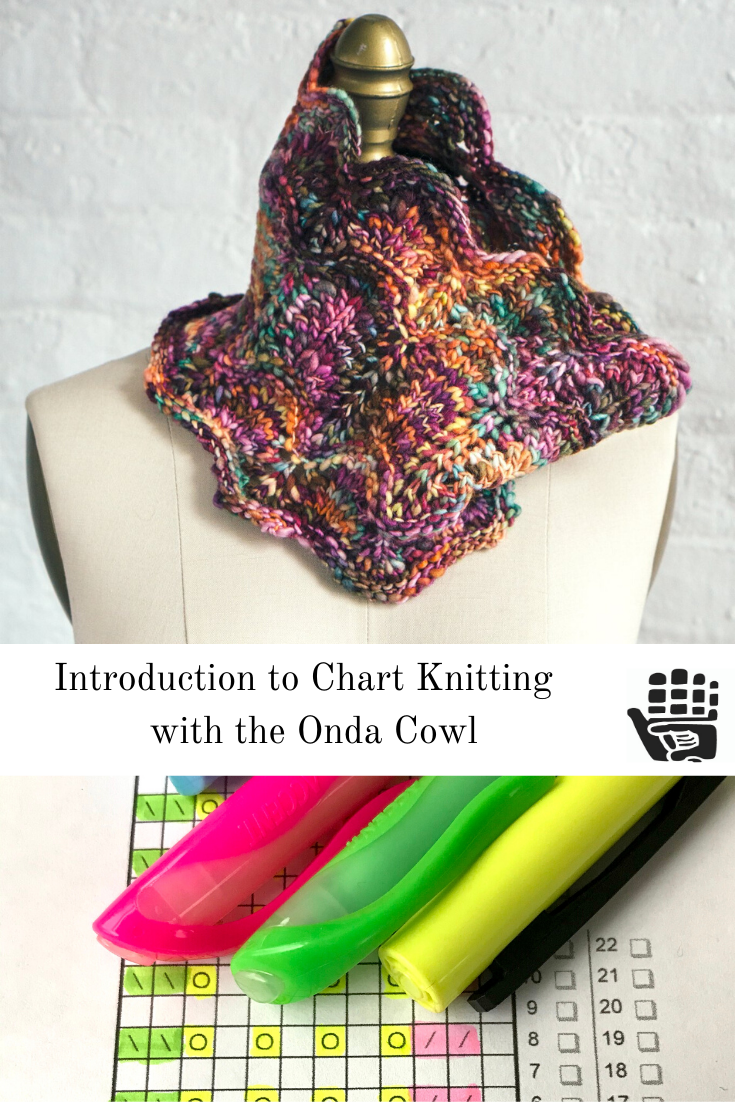
Introduction to Chart Knitting with the Onda Cowl
Share
In knitting patterns, charts are used to visually represent the stitches for colorwork or lace patterning. The Onda Cowl in Manos del Uruguay Wool Clasica is a great pattern to start building your chart-reading skills!
Reading the Chart
What should you notice about the chart in your knitting pattern? Think of the chart as a road map for your knitting as it includes the stitches on each row, the type of each stitch, and any increases or decreases. Before you begin knitting you should take a look at the chart and take note of a few key points.
The numbers on the sides.
As right-handed knitters work their stitches from right to left, the start of your chart, Row 1, is located in the lower right of the chart. As the Onda Cowl is worked in the round, after your first row is completed, you are back at the right-hand edge of the chart, ready to begin round 2 and the next line of instruction.

The legend on the bottom and the side-tracker
Each box on the chart represents a stitch (or multiple stitches in the case of decreases). In the legend, you’ll see that an empty box represents a knit stitch on the right side and the box with a dash in the middle represents a purl stitch. The pattern key for the Onda Cowl follows the Knit Chart Symbols of the Craft Yarn Council. Knitters that are comfortable in reading their stitches will recognize that the symbol represents a stitch as it looks on the right side of the work. We’ve also included check boxes at the right side of the chart to mark off each round as you complete it.
Extra notions
You may find it useful to have a few extra notions nearby when you begin working from a chart to help you keep your place. Highlighter tape, found at some LYSs and office supply stores, is repositionable and the right width for chartwork. Place it on the row you are working and your eye is easily drawn to the right spot.

Post-it notes work in a similar fashion.

Highlighters, or colored pencils, allow you to designate each yarnover stitch yellow, purls blue, the K2togs are pink while the SSKs are green. You could even do a combination if that works best for you! Knitter’s choice!

Knitting from a chart
In the photo below, the stitch markers are placed after each 12-stitch repeat. (We’ve cast on and worked the first 11 rounds to make it easier to see.) This is not required, but oftentimes helps to keep track of the stitches. We have found that it is surprisingly easy to be distracted even counting to twelve when there are increases and decreases!

Rounds 12, 13, and 14 are straightforward as you purl all the stitches, then knit all the stitches, and finally purl all the stitches.

Round 15 is where you need to pay attention. Remember, you are starting on the right-hand side of the chart. This is the line of the chart shown within the “pattern repeat” box:
|
\ |
\ |
O |
O |
O |
O |
/ |
/ |
That means the knitter will Knit 1, K2tog, K2tog, (yarn over, K1)*3, yarn over, SSK, SSK. You’re not at the end of the round yet! You’ll work these stitches again over the next 12 stitches, and the next, and so on until the end of the round.

Now we have a break: Round 16 on the chart shows this is a row of plain knitting. From there on, you’ll continue to work the chart as instructed to complete your cowl!
With practice, reading charts will become just as intuitive as reading the written instructions! Patterns include charts for lace work, colorwork, textured stitches like eyelets, and cables. Remember, just take it one stitch at a time!
Don’t forget to pin this post!

